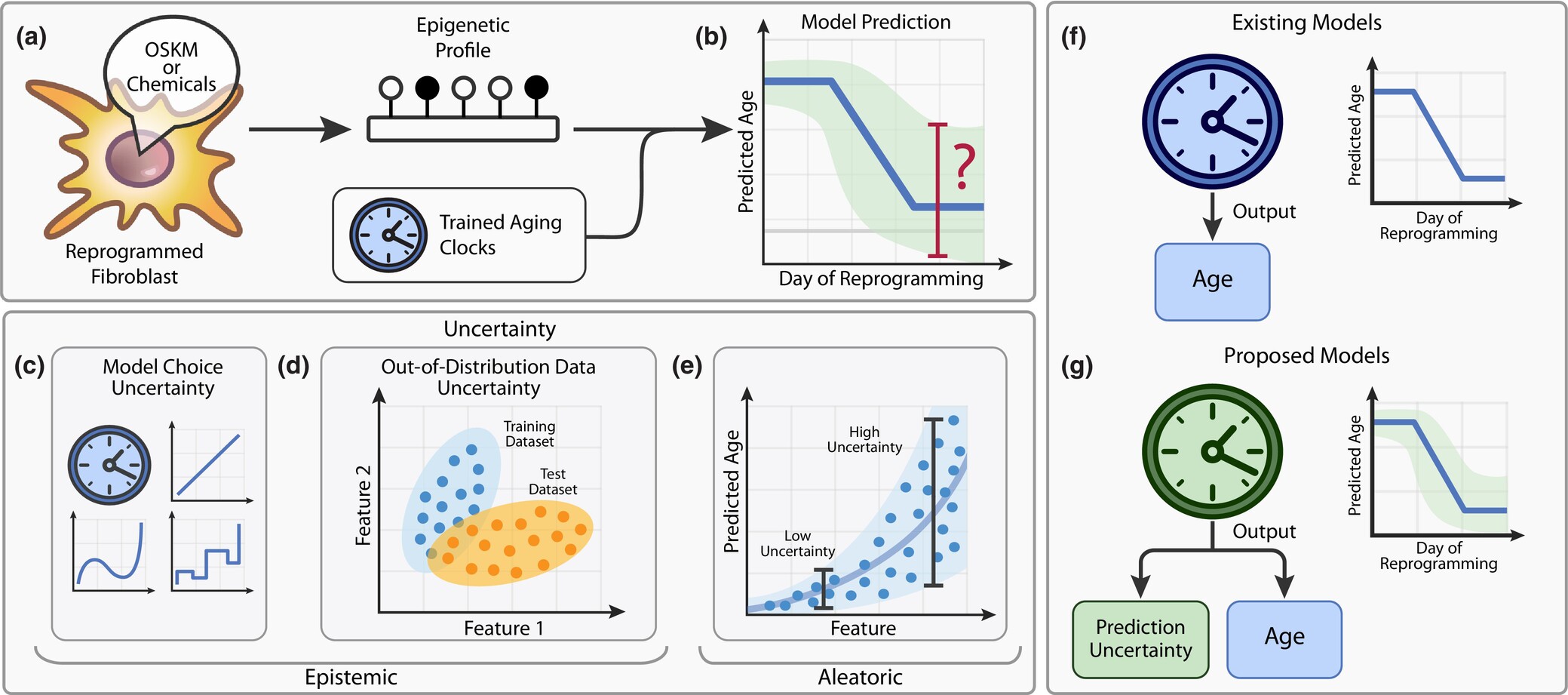.
Cambridge Dictionary:
epistemic
adjective
relating to knowledge or the study of knowledge
Abstract
Epigenetic aging clocks have been widely used to validate rejuvenation effects during cellular reprogramming. However, these predictions are unverifiable because the true biological age of reprogrammed cells remains unknown. We present an analytical framework to consider rejuvenation predictions from the uncertainty perspective. Our analysis reveals that the DNA methylation profiles across reprogramming are poorly represented in the aging data used to train clock models, thus introducing high epistemic uncertainty in age estimations. Moreover, predictions of different published clocks are inconsistent, with some even suggesting zero or negative rejuvenation. While not questioning the possibility of age reversal, we show that the high clock uncertainty challenges the reliability of rejuvenation effects observed during in vitro reprogramming before pluripotency and throughout embryogenesis. Conversely, our method reveals a significant age increase after in vivo reprogramming. We recommend including uncertainty estimation in future aging clock models to avoid the risk of misinterpreting the results of biological age prediction.
1 INTRODUCTION
Reprogramming aged somatic cells into pluripotency or other progenitor states was consistently shown to ameliorate various aging-associated features, either by applying different transcription factors (TFs) or by introducing small molecules to cells in vitro or in vivo (Browder et al., 2022; Chondronasiou et al., 2022; Gill et al., 2022; Olova et al., 2019; Yang et al., 2023). To quantify the effect of age reversal, researchers resort to various methods, including “epigenetic aging clock” models built from DNA methylation (DNAm) data with diverse machine learning (ML) approaches. These approaches are widely employed to compare the “biological age” of reprogrammed cells to that of control cells (Simpson et al., 2021) (Figure 1a,b). These clocks are easy to use and can assess aging from the organismal to the cellular levels, which is particularly valuable in experiments where the large-scale parameters of organismal aging cannot be measured, such as in vitro cellular reprogramming. Notably, a similar approach has recently been used to demonstrate rejuvenation in the course of embryonic development (Kerepesi et al., 2021; Kerepesi & Gladyshev, 2023; Trapp et al., 2021).
FIGURE 1
Prediction uncertainty is an essential component for clinically relevant aging clocks. (a) A common pipeline for testing rejuvenation effect using epigenetic aging clocks. (b) Current aging clocks estimate biological age during the reprogramming process; however, they lack epistemic uncertainty quantification. (c) By selecting a model to make predictions from data, a researcher implicitly introduces model uncertainty. (d) OOD uncertainty arises when the testing data samples are not represented in the training distribution. (e) Aleatoric uncertainty comes from the intrinsic variability in data, for example, when the same level of a feature corresponds to different ages. (f) None of the existing aging clocks estimates epistemic uncertainty. (g) We propose to use aging clocks capable of predicting uncertainty, which could mitigate the potentially erroneous effects of clock predictions on clinical decision-making.
…/…
